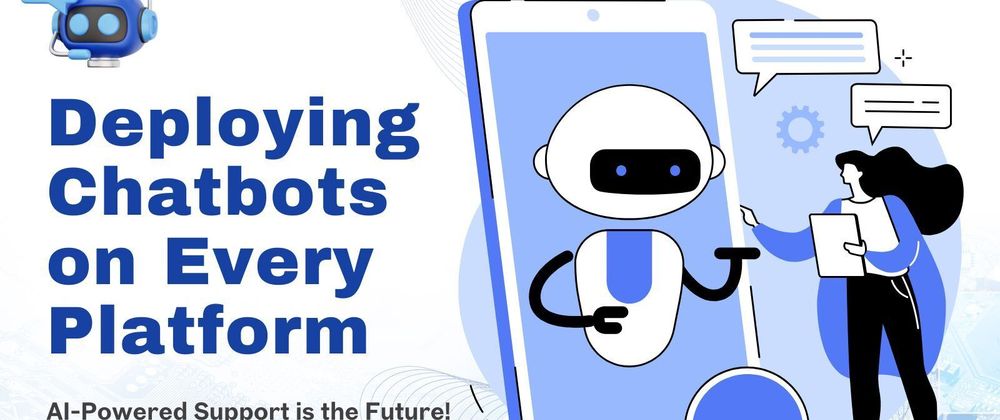Today's customer engagement, operational efficiency, and employee experiences are shaped increasingly by conversational technologies. Chatbots are no longer the domain of experimentation and instead have fast become a strategic enabler. Businesses truly see the immense potential of intelligent assistant deployment due to rapid changes in AI chatbot design, and they are now placing these intelligent assistants on all fronts-from corporate websites to messaging platforms such as WhatsApp.
It is more than just convenience. Also, it is about connecting ecosystems where employees, customers, and stakeholders can interact freely without even thinking of their respective channels of communications. Let us examine how AI chatbots are evolving, the reasons they are omnichannel, and how they are changing the nexus of customer service and employee onboarding with partner support from the top RPA companies.
The Rise of AI Chatbots in Business
Chatbots have evolved in the past ten years, from rule-based, scripted versions early in development, to leveraging natural language processing (NLP), machine learning and intelligent automation, to understand context, sentiment and intent.
AI chatbots are now not only used to resolve queries, but revenue generation, employee onboarding, 24/7 customer support and back-office support. Research shows that organizations using conversational AI have the potential to save up to 30% in operational costs, and impressive customer satisfaction scores.
This efficiency has led to increased interest in developing AI chatbots, especially among organizations for multiple touchpoints.
Why Omnichannel Matters: From Web to WhatsApp
Customers demand consistent service today. A person might start a conversation on a brand website and wish to continue on WhatsApp without repeating any kind of information. Employees also favor quick responses on tools already present, be it Slack, Teams, or email.
Being present with chatbots in the channels, these will bridge the gap between:
Web Chatbots: Best suited for real-time customer support or lead generation.
WhatsApp Chatbots: Since WhatsApp counts over 2 billion users, these provide worldwide engagement opportunities: Order status updates, feedback collection, or service request handling.
Internal Platforms: Chatbots integrated inside companies into collaboration tools speed up HR inquiries, IT support, or onboarding.
When these chatbots are integrated seamlessly, they offer a single brand experience, no matter what platform is chosen.
AI Chatbot Development: Key Considerations
Developing a scalable, intelligent chatbot is not simply a software development project, and developing a successful AI chatbot development requires prior planning in a few areas:
Use Case Definition: Defining the use case - customer support, onboarding, lead qualification, workflow automation.
Platform Selection: the technology or messaging platform for delivery: web, WhatsApp, Messenger, or an in-app integration.
Natural Language: ensuring the chatbot can understand a context, all the languages you need, as well as industry jargon.
Integration with Current Systems: a chatbot must integrate with your CRM, HRMS, ERP or ticketing systems to help it do the things that matter.
Scalability and security: ensuring that when you build to the enterprise level, you have compliance and security.
We need to take a systematic approach to make sure that the chatbot is not just another tool that answers frequently asked questions, but is treated as a business partner that completes the job.
AI Chatbots in Employee Onboarding
Employee onboarding is one of the most valuable use cases for chatbots across organizations. Conventional onboarding can be slow as HR functions are focused on registering new employees on forms, policies and training programs. AI chatbots put an end to this:
Fast Answers: New employees may ask "How do I request a leave?", or even "Where do I find the training modules?" - and get an instant answer.
Automated Workflows: Chatbots are able to initiate workflows in the background. As soon as an employee submits a document or requires access to set up appointments (like setting up an IT account), these chatbots automatically launch the processes behind the scenes.
Personalized Responses: Chatbots can change their responses based on the employee's role, office location, or department.
Around-the-clock Support: Forget about having onboarding-help limited to "office hours;" employees can now get help whenever they want.
As a virtual HR assistant, the AI chatbot for employee onboarding creates a better employee experience and reduces the workload of the HR team.
The Role of RPA Companies in Chatbot Success
Conversational AI bots execute upon conversations, but it is the integration with RPA that really provides some benefit. This is where the best RPA companies fit in.
Example:
A customer asks a chatbot to change their address. The chatbot collects the data, while the RPA bots update the CRM and billing systems.
An employee asks for leave. The request is captured by the chatbot, while RPA updates the HRMS, sends the approval request to the manager and syncs calendars.
A supplier submits an invoice via the chatbot, while RPA passes the data through its business process, collecting and extracting data and resetting the parameters for validation, approval and payment.
This combined AI chatbot and RPA provides a contextually-aware conversation that translates into actions and then end-to-end automation for a variety of workflows.
Future Trends in AI Chatbot Development
Here are Future Trends in AI Chatbot Development, the next step has already begun to surface. Technologies under still-rising voice category:
Voice Assistants: Making chatbots voice-capable so that they can interact with humans in a hands-free manner.
Hyper-Personalization: Using AI to feature the conversations in utterly unique ways, being fully aware of their context.
Proactive Engagement: Chatbots that do not act only as responders to user-initiated acts but rather preempt user needs.
Deeper Automation: Tighter bindings of chatbot-and-RPA-bots for efficient enterprise-level automation.
Analytics and Insights: Using chatbot data for analyzing employee engagement and evaluating customer sentiment on a large scale.
Thus, as these trends mature, the difference will continue to blur between chatbots and Digital Coworkers.
Conclusion
From customer service on websites to personalized sales pitch of WhatsApp, AI chatbots are rewriting how companies interact and operate. From proper AI chatbot development perspectives, organizations not only get to build unification into their communication channels-pane but also handle employee onboarding and complex workflow automation with the RPA companies.
In such a world where the speed of conversion, high-level personalization, and efficiency almost define success, the omnichannel deployment of chatbots is not just a competitive edge; rather, it has now become a necessity for thriving. Organizations which take this change by its horns will sit pretty in the digital workplace of tomorrow.





Top comments (0)